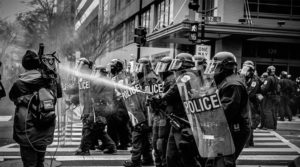
A protest (Customs Form 19) is a means by which an importer can contest the way in which an entry was finalized or liquidated. Generally, any issue regarding the value, classification, or admissibility of an entry may be raised after liquidation. 19 U.S.C. § 1514; 19 C.F.R. § 174.13.
When it comes to importing goods into the United States, there are a lot of regulations and procedures to follow. Sometimes, despite your best efforts, issues may arise with the Customs and Border Protection (CBP) decisions. In such a situation, you can file a protest against the CBP decision, as provided under 19 U.S. Code § 1514. In this blog post, we will cover the basics of CBP protest, what decisions can be protested, how to file a protest, what a protest should contain, and provide an example of a protestable decision.
What is a protest against a Customs Decision?
A protest against a Customs decision is a legal process that allows importers, exporters, and other affected parties to challenge decisions made by CBP. A protest is essentially a request for the CBP to reconsider its decision and make the necessary corrections if necessary. This process helps to ensure that the CBP is making fair and consistent decisions that are in compliance with relevant laws and regulations.
What decisions of Customs can be protested?
Not all CBP decisions can be protested, but many can. Some examples of protestable CBP decisions include:
- The classification of imported merchandise
- The value of imported merchandise
- The rate of duty applied to imported merchandise
- The country of origin of imported merchandise
- The marking or labeling requirements of imported merchandise
How is CBP protest filed?
To file a CBP protest, the importer or other affected party must submit a written document to the CBP within 180 days from the date of the CBP decision. The protest must be filed with the port director at the port of entry where the merchandise was entered or withdrawn. The protest must be in writing and must contain specific information about the decision being protested.
What should a CBP protest contain?
A CBP protest should contain the following information:
- A statement that the document is a protest
- The specific CBP decision being protested
- The reasons why the decision is incorrect
- Any applicable law or regulation supporting the protest
- A request for the specific relief sought
- Any other relevant information or documentation
What should I do if I want to file a customs protest?
If you believe that you have a valid reason to file a customs protest, you should seek the assistance of an experienced customs attorney or a licensed customs broker. They can assist you in preparing and filing the protest, ensuring that you include all of the necessary information and documentation.
Example of a protestable decision
An example of a protestable decision is the classification of imported merchandise. Suppose you import a new type of product that has not been previously classified. The CBP may classify the product under a specific tariff classification that you believe is incorrect. In this case, you can file a protest to challenge the CBP’s decision and request that the product be classified under a different tariff classification that you believe is correct.
Conclusion – Final Thoughts
CBP protests are an essential tool for importers and other affected parties to challenge CBP decisions that may be incorrect or unfair. If you believe that you have a valid reason to file a protest, it’s important to act quickly and seek the assistance of a customs attorney or broker to ensure that your protest is filed correctly and effectively. If you need assistance with protesting your goods, contact Abady Law Firm

